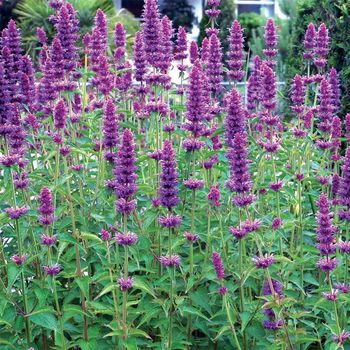Korean Mint
Other Names: Agastache rugosa (Korean Mint, Blue Licorice, Purple Giant Hyssop, Huo xiang, Indian Mint, Patchouli Herb, Wrinkled Giant Hyssop, Pogostemon cablin
Agastache Rugosa is a perennial growing to 1m by 0.6m hardy to zone 8 and not frost tender. Agastache Rugosa is in flower from July to September, and the seeds ripen in September. The flowers are hermaphrodite (have both male and female organs) and are pollinated by Bees. The plant is self-fertile. Agastache Rugosa is noted for attracting wildlife.
The plant prefers light (sandy) and medium (loamy) soils and requires well-drained acid, neutral and basic (alkaline) soil. Agastache cannot grow in the shade and requires dry or moist soil.
Special Precautions of Korean Mint
The benefits of Korean Mint are
Korean mint is commonly used in Chinese herbalism, where it is considered to be one of the 50 fundamental herbs. Considered to be a "warming" herb
- used in situations where there is "dampness" within the digestive system, resulting in poor digestion and reduced vitality. The leaves and stems are antibacterial, antifungal, aromatic, carminative, diaphoretic, febrifuge and stomachic. Agastache Rugosa leaves are used internally to improve the appetite and strengthen the digestive system, relieve symptoms such as abdominal bloating, indigestion, nausea and vomiting. They are also used to treat morning sickness.
- The leaves are also used in the treatment of chest congestion, diarrhoea and headaches.
- An infusion of Korean Mint leaves is used in the treatment of angina pains.
- The plant is used as a folk remedy for cancer, extracts of the plant have shown anticancer activity.
